Tarot has always been a conversation between seeker and symbol. At least, that’s how we see it. Whether working with a single card to frame a morning, or a Celtic Cross to sift through tangled feelings, the way cards are arranged on the table shapes the stories that rise to meet us. In our experience supporting readers through MysticLog, we’ve learned that the art of the spread, the conscious placement of each card with intent and curiosity, can transform even the simplest draw into a source of genuine growth.
Across centuries, formats for laying out cards have taken root in every tradition. But no matter what form it takes, every tarot layout gives structure to the flow of insight. The right spread can clarify a question, help trace a pattern, or simply shed light on what’s hidden in plain sight. Here, we invite you along as we look closely at time-tested patterns, explain the thinking behind them, and share a little practical wisdom for those ready to weave tarot further into their lives.
Small changes in how you arrange the cards can unlock unexpected answers.
We’ll begin at the beginning, with one card, then move to larger layouts, exploring both the deeply familiar and the quietly inventive. We’ll also talk about ways to personalize spreads, journal with impact, and connect more wholly to your readings, whether you’re working privately or guiding others. And, naturally, we’ll offer ways MysticLog can fit into this evolving practice, serving as a digital memory and creative partner as you grow.
Why tarot layouts matter: more than just order
A tarot reading without order is like a novel with the chapters out of place. You might get flashes of sense, but the story barely holds together. Tarot arrangements organize intuition, guiding both the reader and querent on a meaningful journey. Each spot on the table becomes a vessel for a part of the puzzle, making sense of the shifting currents within and around us.
Many new readers overlook the deeper role of arrangement, seeing it mostly as habit or tradition. But the nature of a layout shapes the focus, depth, and energy of the session. Where you place the cards, and why, can anchor a question or reveal layers that a random draw never would.
Think of spreads as a kind of map, each position its own territory, inviting a different kind of exploration. Some focus on time (past, present, future), others on parts of self, relationships, or cycles of change. The “rules” are less about right answers and more about framing, structure, and clarity. Over years of research, we’ve seen that consistent use of thoughtfully chosen layouts not only sharpens intuition but also supports clearer, braver decision-making.
The foundation: single card spreads
Sometimes, less is truly more. A single card draw is the backbone for so many readers, quick, focused, and packed with meaning. We often turn to it when:
- You need a simple nudge for the day
- Looking for an answer to a single, clear question
- Developing a daily study practice
One card offers a concentrated lens, making complexity unnecessary. The process is straightforward:
- Shuffle with your question or intention in mind.
- Cut the deck and draw a card.
- Reflect on its image, story, and possible message within your life.
We’ve seen students return to this approach, day after day, to track personal growth, moods, or patterns. Pairing one-card draws with a journal, especially a digital tool like MysticLog, provides a way to gather these daily sparks into something greater over weeks and months.
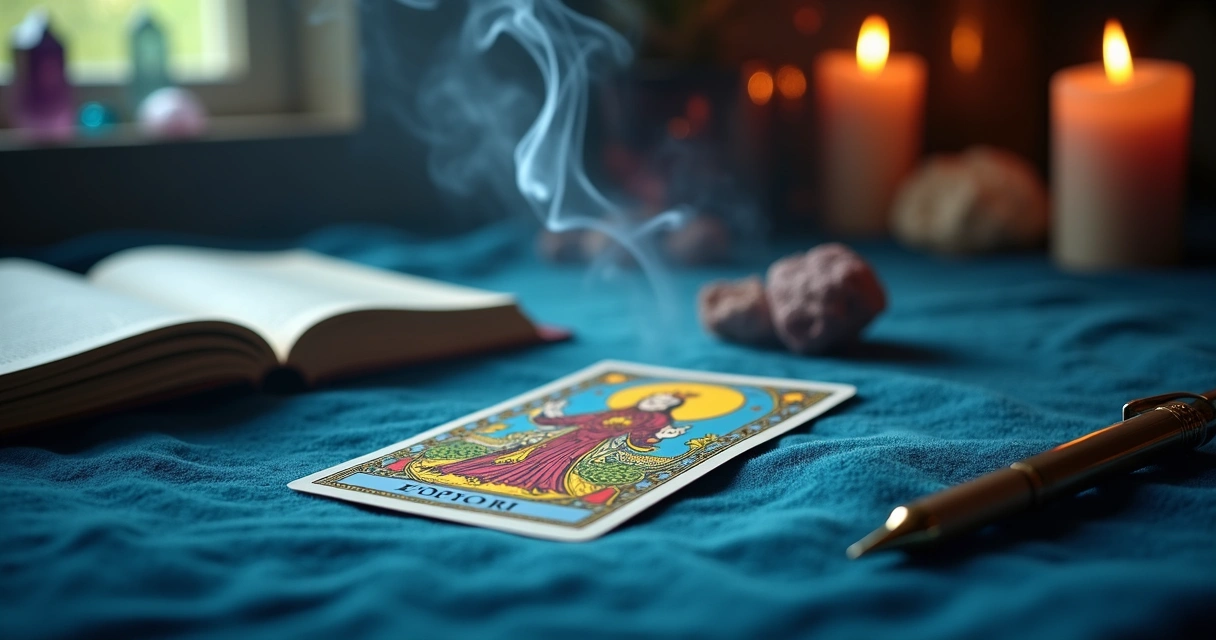 The classic three card spread: layers of past, present, and future
The classic three card spread: layers of past, present, and future
If the “one card” is a daily seed, the three card spread is an ancient tree. Three cards unlock patterns with a beginning, middle, and end, giving enough context to see where you’re coming from and where you might be headed.
Popular three card patterns
- Past – Present – Future
- How did I get here? What’s now? Where am I going?
- Situation – Action – Outcome
- What’s happening? What can I do? What will likely unfold?
- Mind – Body – Spirit
- Where does my energy rest or need care?
There’s a simplicity to this layout, but it also brings remarkable versatility. We use it with querents asking about relationships, career crossroads, or emotional blocks. For those journaling with us, three card stories create strong snapshots to revisit as life evolves.
When laying out your three cards, try placing them left to right or top to bottom, aligning with how you naturally read. Pause after each card, asking yourself what “role” that position represents for you or your querent. Sometimes, the position itself will shape the meaning more than the booklet!
Going deeper: five card spreads to expand your story
Five card layouts tip us into more layered questions. Here, we begin to address dynamics, influences, or underlying causes that single cards or three-card layouts can’t fully address.
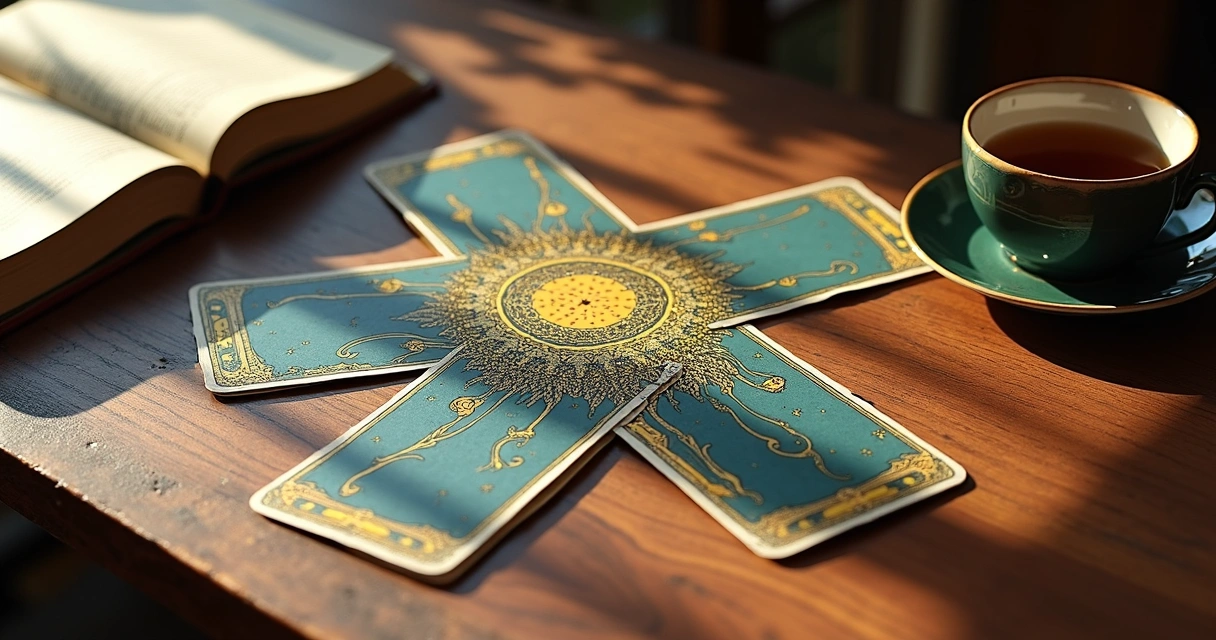 Common five card arrangements
Common five card arrangements
- Cross shape: Core – Challenge – Past – Future – Advice
- Linear: Situation – Strengths – Weaknesses – Guidance – Outcome
- Elemental or Compass Spread: Center as focus, with four directions (mind, body, spirit, emotion)
In our readings, the cross formation works well when a querent’s stuck or uncertain, the “challenge” card holds up a mirror, while “advice” feels like direct counsel. We also encourage students to use five-card layouts to stretch intuition: which position speaks first? Which cards seem to dialogue with each other? This interactivity brings richer interpretation, especially when captured in a tool like MysticLog, where each card’s image and meaning can be annotated for future reference.
The celtic cross: a legendary spread for complexity
If tarot layouts had a star, the Celtic Cross would be it. This timeless spread offers a panoramic view of questions, weaving together conscious and unconscious, hopes and fears. Here’s the structure as we use it:
- Significator: What’s at the heart
- Crossing card: Obstacle or support
- Below: The root or subconscious
- Above: Conscious goals or ideals
- Behind: The past influence
- Before: Near future
- Staff positions:
- Self: Your present attitude
- Environment: Outside influences
- Hopes/Fears: What you wish or worry
- Outcome: Likely result
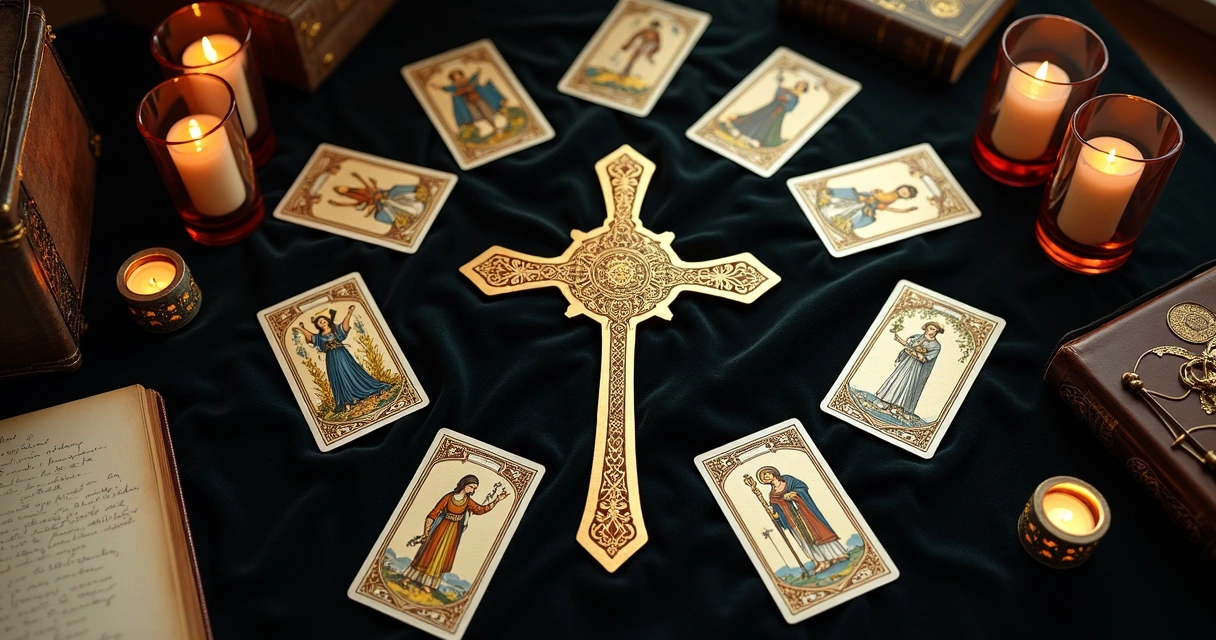 We usually recommend the Celtic Cross when the question is complex, involving multiple layers or influences. For those seeking deep self-reflection, the interplay between “above,” “below,” and “crossing” positions can spark luminous realizations. Of course, such spreads can feel intimidating at first. Keeping a detailed record in a tarot journal, as we suggest at MysticLog, helps ease the overwhelm and captures the wisdom for later review.
We usually recommend the Celtic Cross when the question is complex, involving multiple layers or influences. For those seeking deep self-reflection, the interplay between “above,” “below,” and “crossing” positions can spark luminous realizations. Of course, such spreads can feel intimidating at first. Keeping a detailed record in a tarot journal, as we suggest at MysticLog, helps ease the overwhelm and captures the wisdom for later review.
Thematic and custom spreads: for love, career, and growth
Certain questions deserve layouts crafted around their unique energy. Over time, readers have created thematic spreads, for instance, ones focused on love and relationships, decision-making, healing, or spiritual direction.
Typical love and relationship layouts
- Me – You – The Relationship
- What draws us together? What challenges us? How can we grow?
- What do I need? What do they need? What serves us both?
These help clarify not only dynamics between two people but the deeper needs and possible pathways. Other themes frequently requested include career change, conflict resolution, or personal healing.
Create the spread that fits the question, not the other way around.
More advanced readers may even invent their own patterns, adding cards or positions as intuition suggests. In our work, we often encourage personalization: there’s no law that says you must stick with tradition if your question calls for something else. The best readings often come from layouts born in the moment, shaped by real needs.
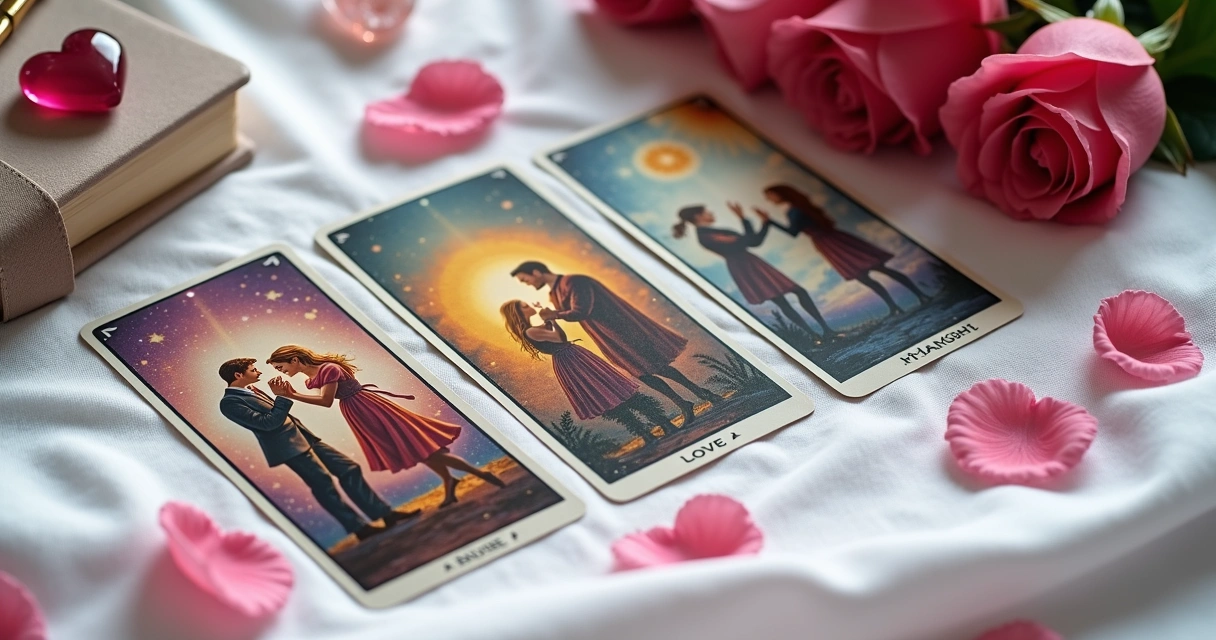 Everyday advice for new tarot readers
Everyday advice for new tarot readers
We remember what it felt like to begin with tarot: a mix of excitement and confusion, that urge to “do it right.” One lesson we’ve gathered is that no one path fits all, but there are practical habits that smooth the journey.
How to pick a layout for your question
- If your question is broad or foundational, try three or five cards.
- Facing a clear yes/no or need for focus? One card works best.
- Complex or layered issues benefit from the Celtic Cross or custom variations.
Let your curiosity guide you, but pay attention to what feels manageable. Growth happens steadily, with practice and patience, not in a rush to master every layout at once.
Cleansing your tarot deck: setting the tone
Before drawing cards, many readers (ourselves included) set a tone or clear the space around the deck. This can be as simple as:
- Shuffling with intention – focus your mind, breathe slowly
- Tapping the deck or laying it out under moonlight (for some, this feels grounding)
- Setting an affirmation or spoken intention before drawing
What matters most is acting with care; bring yourself present to the process. Some days, we light a candle; others, we simply pause before the first shuffle. Over time, these rituals create a sense of trust and continuity with your cards.
The value of a tarot journal in learning and reflection
Journaling is one habit we return to again and again. Every reading offers more than just answers: it creates a personal archive of questions, changes, and subtle growth. By recording spreads, interpretations, and reactions, you begin to see how your intuition matures.
- Document the date, question, and layout
- Record your first impressions for each position
- Add notes for patterns or surprises
- Review after a few days or weeks, what seems clearer now?
With MysticLog, we aimed to bring this practice seamlessly into the digital world. Whether you photograph your spread or type interpretations, your readings are easy to review and build upon. For more ideas, we suggest reading our guide to insightful tarot journaling.
Integrating intuition: going beyond the book
Humans are hungry for answers, but the best tarot readings begin in uncertainty. A layout is a jumping-off point, intuition, experience, and genuine listening fill in the rest. We remind all our students (including ourselves) to treat card meanings as invitations rather than limits.
If, in a traditional spread, a card “makes no sense,” pause. Listen to your gut. Ask if the position could mean something else. Sometimes, setting aside the booklet and letting your feelings, memories, or instinct lead the way offers the truest guidance.
Trust what you notice first.
After all, every reading is a conversation. As you interact with the patterns on the table, allow room for surprise. Make note of the colors, images, or themes that pop out, even if you can’t explain why. Later, journaling (especially with prompts or tools like those in MysticLog) helps make sense of these hunches.
Personalizing and creating your own tarot layouts
While tradition gives us strong frameworks, making your own format can be just as rewarding, and very practical for certain situations. Here’s how we approach custom design:
- Start with the question – what really needs exploring?
- Decide the number of areas or elements (time, people, choices, obstacles, etc.)
- Assign a clear focus to each card position
- Lay out the cards in a shape that feels intuitive to you
- Interpret each position, then look for connections between them
For example, if a friend faces several paths at a career crossroads, we might create positions like: “what excites me,” “what I fear,” “hidden strengths,” and “next steps.” Drawing cards into these roles can bring out hidden possibilities.
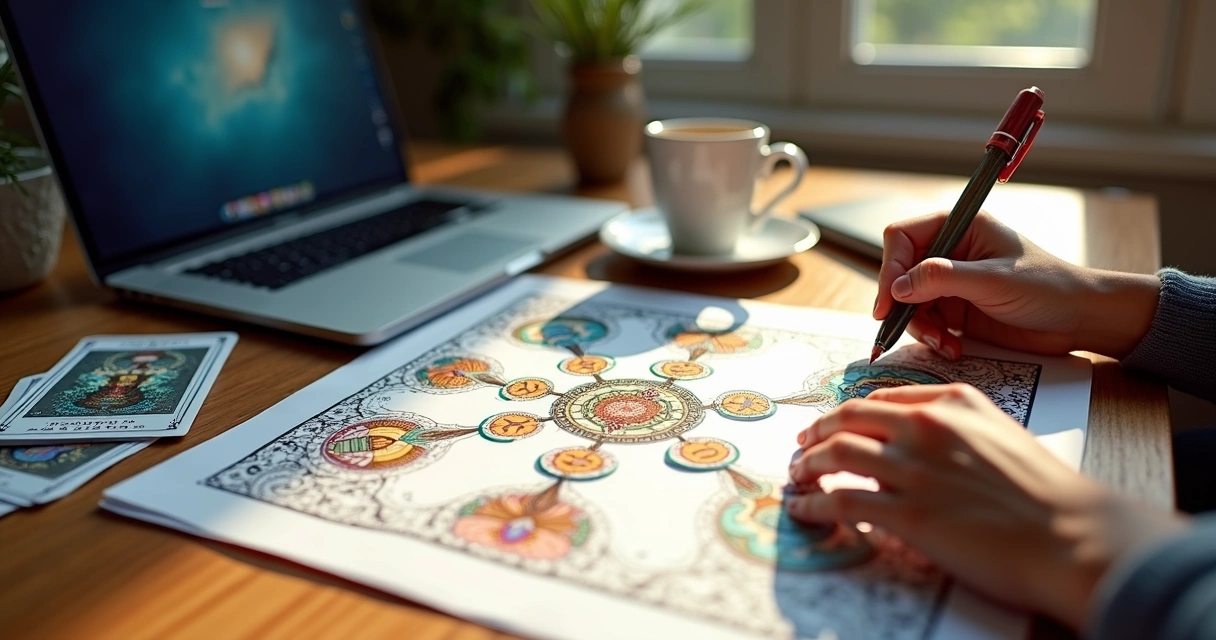 Don’t worry if the first try feels awkward. Experiment, refine, and notice what patterns serve you or your querents best. Over time, your personal layouts will become as meaningful as the classics, sometimes even more so.
Don’t worry if the first try feels awkward. Experiment, refine, and notice what patterns serve you or your querents best. Over time, your personal layouts will become as meaningful as the classics, sometimes even more so.
Tips for deepening your practice
As with any art, consistency feeds growth. We’ve gathered a few reminders that support not just skill, but enjoyment too.
Practice regularly, but lightly
- Make time for cards weekly, even if brief
- Avoid over-reading, space gives perspective
- Alternate between solo readings and those for friends or clients
It’s useful to review past readings, especially those that felt tricky or unresolved. Give old spreads a second look from your current vantage. Often, connections missed at first will begin to make sense with distance.
Reflect with others
- Share spreads in safe spaces or with trusted readers, hearing different views can add depth
- If you use MysticLog, you can revisit old readings and even compare notes with peers or mentors
And don’t forget: patience is truly a reader’s best friend. There’s no finish line to understanding the cards, only an unfolding process.
Expand your learning
- Try unfamiliar layouts to see what surprises you
- Read widely about symbolism, mythology, and psychology, these nourish interpretation
- Use creative prompts (from MysticLog’s AI assistant, for instance) to challenge your understanding
- Pair layouts with meditation, art, or even movement
For a deeper introduction to tarot, with practical steps for getting started, we’ve published a practical guide to tarot card reading for self-discovery. It complements journaling and expands foundational practices.
Common pitfalls, and how to sidestep them
Even seasoned readers stumble now and then. Some regular patterns arise that can dampen the experience:
- Using too many cards for vague questions
- Rushing the interpretation just to “finish”
- Forgetting to track readings, so growth goes unnoticed
- Relying too heavily on book definitions, ignoring intuition
Take your time, anchor your question, and listen to your inner response. We advocate trusting the process, errors and all. That’s where the learning happens, not in the perfection, but in the lived, messy moments.
Where digital tools like MysticLog fit in
We created MysticLog to make the practice of recording, reviewing, and deepening tarot readings much easier. Organizing each session, from decks to spreads to client notes, brings relief and increases clarity. Whether you’re a seasoned professional or a curious beginner, having a digital record with tags and search functions means patterns are easier to spot and wisdom less likely to fade with time.
The AI assistant in MysticLog offers suggestions for symbolism, helps with difficult cards, and proposes layouts suited to your specific question or mood. This acts as a supportive co-reader, never taking over your voice, but helping strengthen and clarify your intuition. Our journaling and logging features encourage regular reflection, a habit we’ve found truly transforms the learning curve.
For more on how to grow as a tarot reader, sharpen your psychic skills, and improve your experience, our tarot reading guide with ten tips is a rich resource.
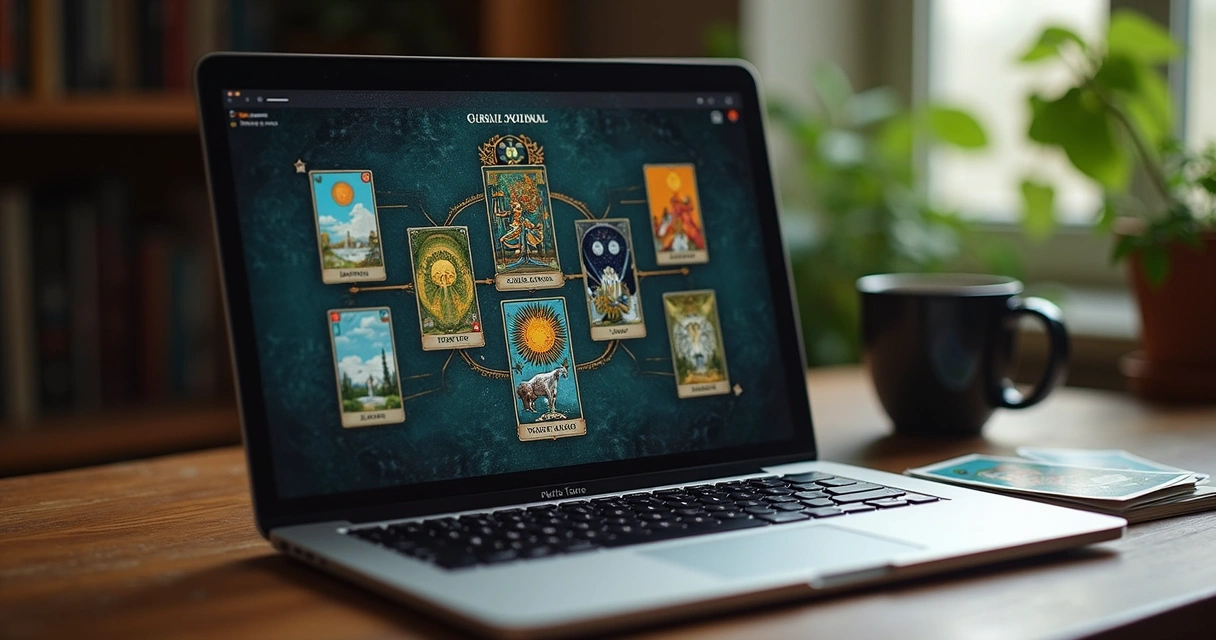 If you’d like more inspiration, we frequently add new spreads and tutorials to our tarot blog section. There, you’ll find discussion of layouts for every mood or need, all designed to help you develop a practice that’s flexible, personal, and deeply effective.
If you’d like more inspiration, we frequently add new spreads and tutorials to our tarot blog section. There, you’ll find discussion of layouts for every mood or need, all designed to help you develop a practice that’s flexible, personal, and deeply effective.
Building your own tradition: tarot as evolving practice
There is no final word in tarot, just an ongoing conversation with symbols, context, and change. Using layouts builds a strong rhythm for this process, but real growth comes through weaving order and intuition together. The best tarot readers we know play with both discipline and improvisation.
We hope this guide sparks ideas, confidence, and, perhaps, a dash of courage as you make the layouts your own. For those starting out, be gentle. For those with years behind them, let the familiar become strange, try new positions, reverse the order, invent a fresh layout for each moon phase.
Each spread is a question, and every question opens a new path.
If you’re seeking both structure and creativity in your readings, we invite you to experience all that MysticLog offers. From storing spreads and interpretations to growing your skills with AI-guided support, our tools are built by readers, for readers, eager to see what you’ll ask next.
Frequently asked questions about tarot layouts
What is a tarot spread?
A tarot spread is an intentional arrangement of cards on the table, where each card’s position is assigned a specific meaning or role in the reading. Spreads help organize insight by framing questions, clarifying context, and showing connections between cards. Common examples include one card draws, three card setups for past-present-future, and the multiposition Celtic Cross.
How do I choose a tarot layout?
Choose a tarot layout by matching the complexity and focus of your question with the structure of the spread. For simple questions or daily check-ins, one card suffices. For exploring patterns or situations, three to five cards are effective. Deeper, multilayered inquiries might call for the Celtic Cross or a custom arrangement designed specifically for your needs. Let your comfort and curiosity lead you, the best layout is the one that feels right for your purpose.
What are the most popular tarot spreads?
The most popular tarot layouts include the classic one card draw (for guidance or meditation), the three card format (like past-present-future), various five card arrangements (cross, linear, elemental), and the traditional ten card Celtic Cross (for detailed overviews of complex questions). Thematic spreads for love, career, or personal growth are also widely used.
Can beginners use complex tarot spreads?
Yes, beginners can use complex tarot spreads if they proceed with patience and a willingness to learn. We recommend starting with simpler patterns (one or three cards), but as confidence grows, experimenting with layouts like the Celtic Cross or custom variations brings richer insight. Using a tarot journal or digital tool to record each session makes learning from complex layouts much easier.
Where can I find free tarot spreads?
Free tarot layouts can be found in many books, blogs, and, importantly, through digital journaling tools like MysticLog, where readers create and share their own favorite patterns. Our own tarot blog features a range of examples and custom arrangements for nearly any question or need.

